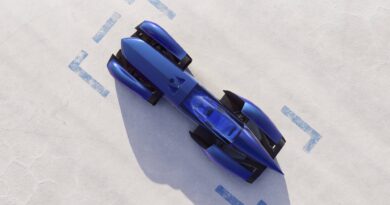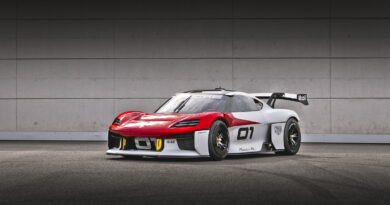BYD Shark 6 to make life tough for Ranger, Hilux with circa-$60K start price; first deliveries late 2024
Orders for the BYD Shark 6 will open in Australia on October 29 – and the plug-in hybrid electric ute looks set to undercut its dual-cab rivals.
Pricing for the new Shark 6 – the first of a family of electrified utes from the fast growing Chinese brand – will be announced within weeks and first deliveries are due by the end of 2024.
BYD isn’t saying what the Shark 6 will cost yet, instead repeating it will be “competitive” in a market dominated by the Ford Ranger and Toyota Hilux.
READ MORE: BYD Shark attack! Plug-in hybrid ute set to maul the Ford Ranger and Toyota Hilux
READ MORE: Why electric car-maker BYD is adding ICE in Australia with the 2024 BYD Sealion 6
READ MORE: Beware HiLux and Ranger! BYD reveals plug-in ute headed for Aussie sale soon
But the hints are there that it will slide in somewhere close to $60,000, making it a serious rival for cars that are powered by turbo-diesel engines.
The CEO of Australian importer EV Direct, David Smitherman, says previous speculation about pricing of the Shark 6 was too high.
“It will below the leaked $68,000 on the government website,” he told EV Central of stories published earlier this month.
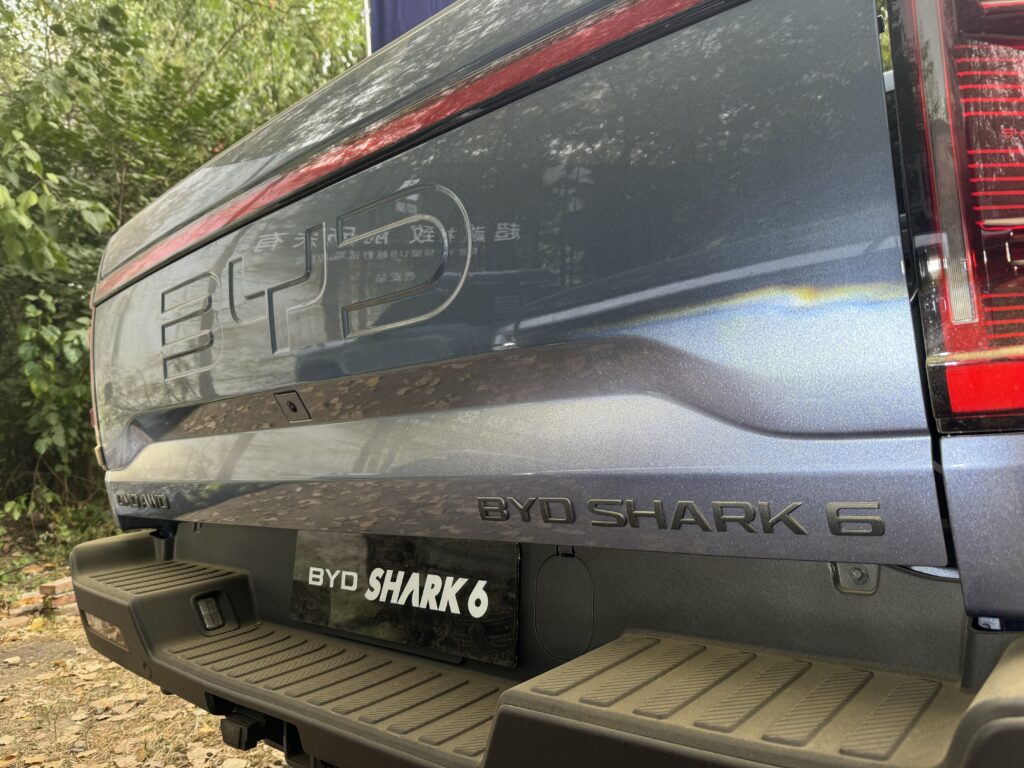
“One thing’s for sure, we’ll make sure we offer a higher spec and lower price.”
Like the Hilux and Ranger the Shark 6 has undergone extensive Australian development in an effort to better prepare it for local conditions and tastes.
However, there’s a huge difference between rivals in what’s going on beneath the skin.
Rather than diesel, the Shark 6 uses a plug-in hybrid electric system that pairs two electric motors – one front, one rear, for all-wheel drive – with a frugal 1.5-litre four-cylinder turbocharged petrol engine.
The electric motors are the main thing driving the wheels but the petrol engine can boost power slightly above about 70km/h. Otherwise the engine acts as a generator if additional range is required, allowing the car to travel anywhere there are petrol stations.
There is no gearbox, with the petrol engine instead running directly to the front wheels above about 70km/h.
In EV mode the Shark 6 utilises its 29.58kWh battery to provide about 80km of range and it can then be recharged from a home powerpoint in about 15 hours. A wallbox charger lowers that charge time to about 4.5 hours.
There’s also a 60-litre fuel tank that provides an additional 700-odd-kilometres of range, for a claimed 800km of range in total; when running as a hybrid the Shark 6 is claimed to use about 7.9 litres of fuel per 100km.
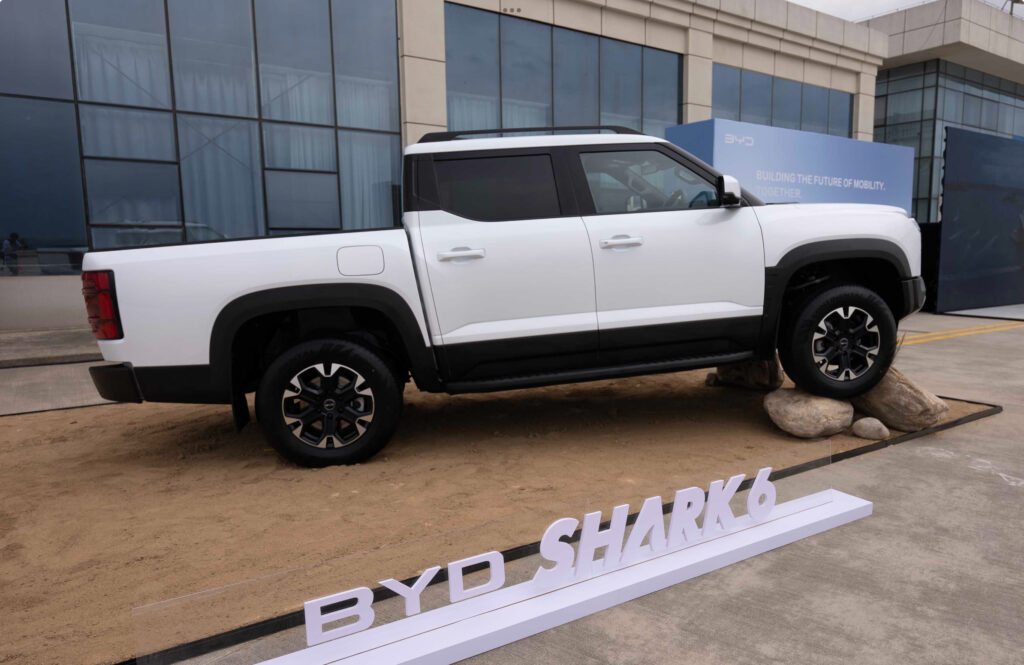
Around town, the hybrid system is likely to be a lot more economical than the diesel utes that dominate.
And the ability to run in EV mode holds real appeal to fleets and businesses trying to lower their running costs and reduce their environmental impact.
“We’ve had huge interest from fleets and governments across the country,” said Smitherman.
The Shark 6 also has different thinking beyond its PHEV drivetrain.
Whereas most utes utilise a live rear axle with leaf springs – generally chosen for load carrying, albeit at the expense of ride and on-road dynamics – the Shark 6 has double wishbone independent suspension with coil springs.
The company admits it focussed more heavily on on-road driving manners at the expense of off-road, although it still argues the Shark 6 is a competent device in rough terrain.
It comes with a full-size spare wheel but does without a low range transfer case; instead BYD says the torquey nature of the electic motor provides the low-speed pull and tractability required for off-road work.
The Shark 6 is expected to launch with two highly-specified models, with the better-equipped Premium getting 18-inch alloy wheels, power adjustable front seats, faux leather trim, dual-zone ventilation, 360-degree camera and a head-up display.
If the price sits below $60K it would make it about the same price as relatively sparsely equipped versions of the Hilux and Ranger, something that would provide a serious tempter for those looking to lower fuel costs.
It’s not all good news for the Shark 6.
Its payload is towards the lower end of the dual-cab ute segment, at 790kg, roughly matching some more highly optioned models from rivals.
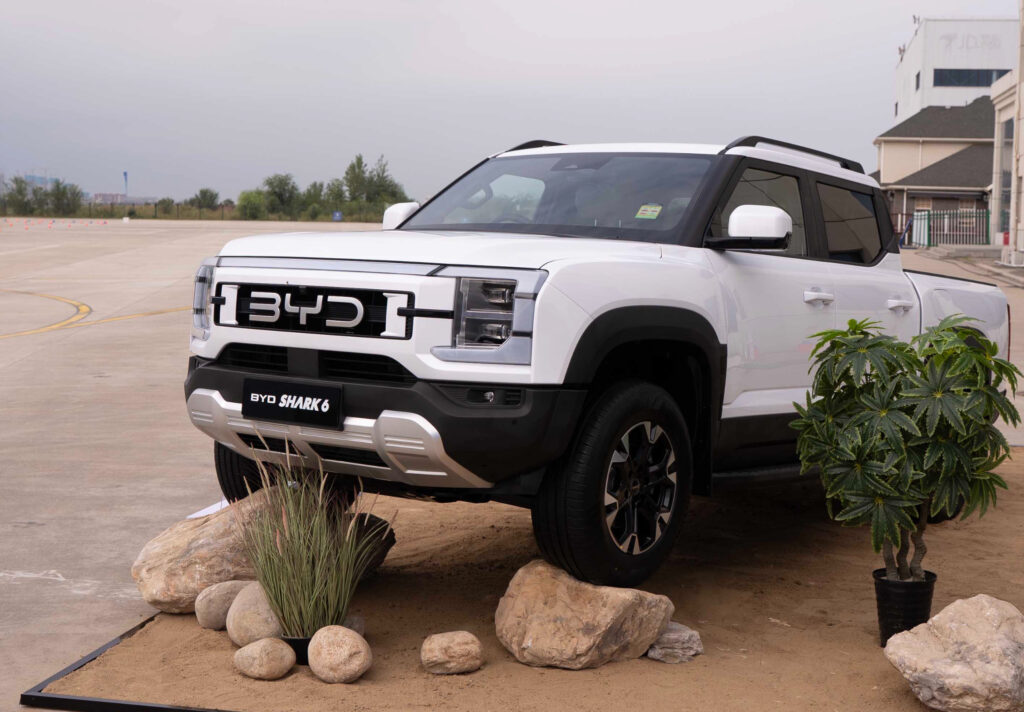
But its tow capacity is limited to 2500kg, a full tonne below the class norm.
Smitherman believes that will still suit most buyers, allowing them to tow a sizeable caravan or boat.
BYD believes the Shark 6 could be the top selling car in its range, selling upwards of 15,000 vehicles annually.
It comes at a time of significant change for the ute market.
In 2025 Kia will launch its Tasman and Ford will introduce a plug-in hybrid version of the Ranger, while GWM will follow suit with a PHEV version of its Cannon Alpha.
Toyota is expected to replace its Hilux with an all-new model in the next 18 months and there’s also a new Nissan Navara in the wings.


